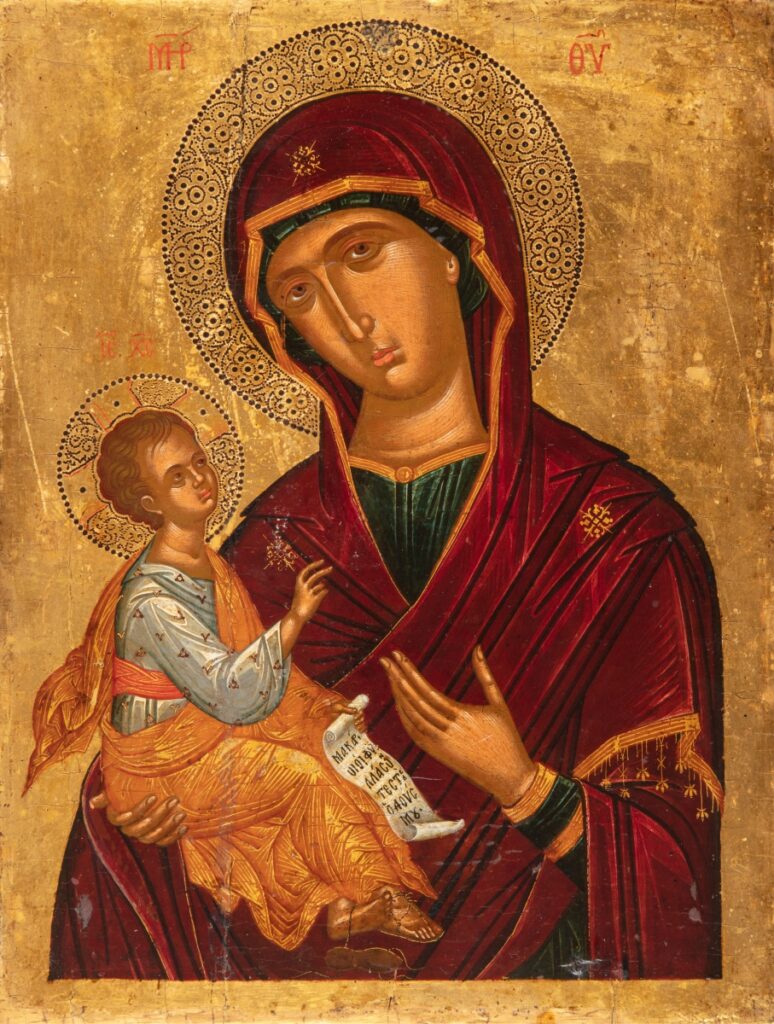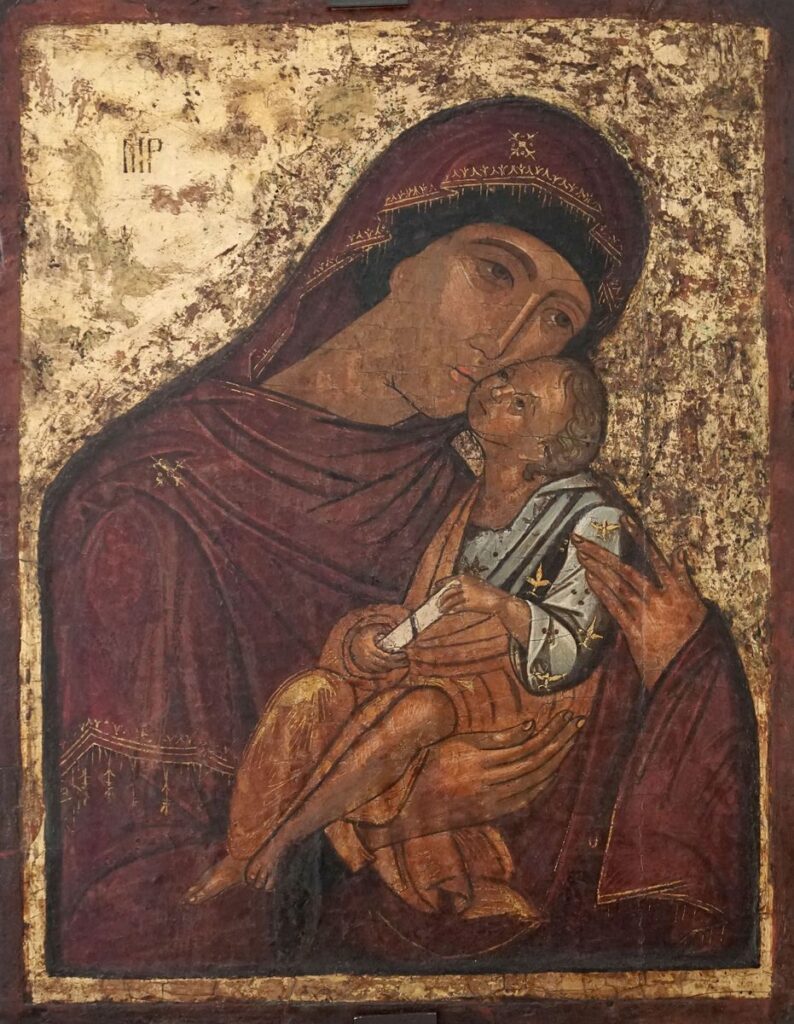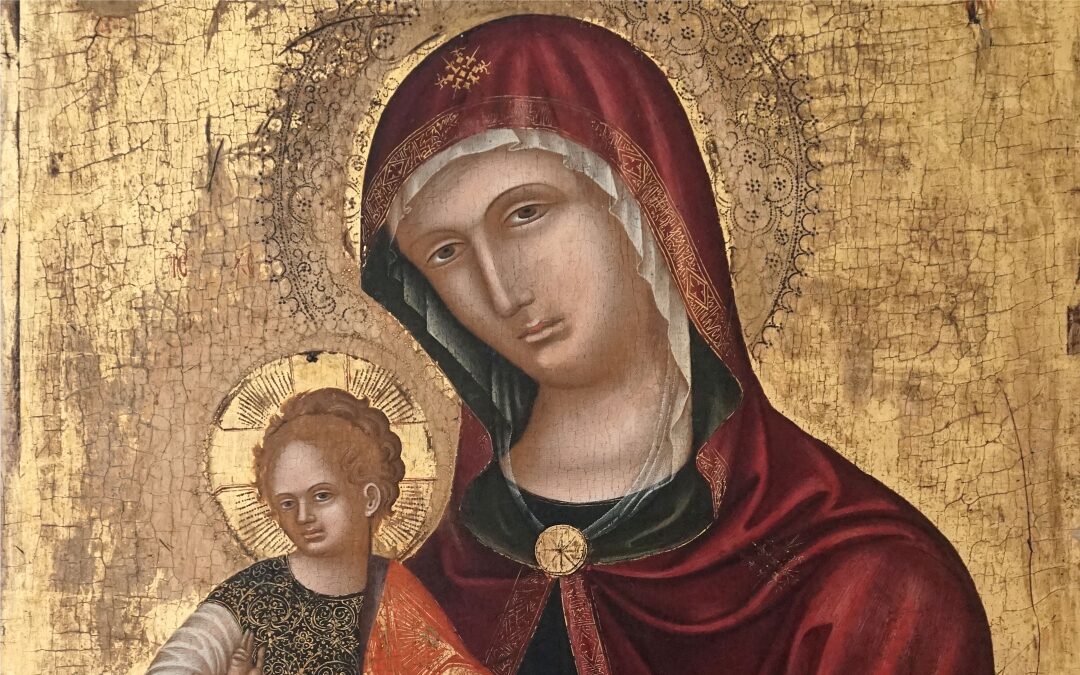The island of Crete was under the rule of Venice from 1211 and during the first period of Venetian rule wall painting had a provincial character. But, from the beginning of the 14th century, the ideas of the Palaeologian renaissance began to permeate Cretan wall painting, and from the middle of this century, a classicist academic trend appeared in Crete.
Painters from Constantinople, who were between 1369–1421. emigrated to Kandia (Heraklion), they played a significant role in the creation of Cretan painting, bringing the iconographic and stylistic trends of the Byzantine capital to the island. Their presence on the island is well documented, although no works have survived, so based on style and iconography, a large number of icons can be attributed to these painters. The new style brought to Crete by the artists of Constantinople and the influence of Western art encouraged by the Venetian presence on the island, then the growth of trade and related to it, the appearance of a rich and well-educated bourgeoisie that supported art, influenced the emergence of great painters and a distinctive style in icon painting known as the Cretan school of painting or the Italo-Cretan school.
When, at the end of the 14th century, the wooden iconostasis was replaced by a marble one, icon painting took precedence over wall painting, and Candia became the centre of icon painting activity, but also of wall painting, which lost its impetus after the fall of Constantinople in 1453. In the period of the 15th to 16th century, the city of Kandia had about fifteen thousand inhabitants.

The leading painter of the first half of the 15th century was Angelos Akontatos. In Byzantine iconography, Akontatos introduced new iconographic patterns, such as St. John the Baptist depicted with wings, a special type of the Virgin with the Christ Child known as the Virgin of Cardiotis. His icons served as patterns for perforated sketches (antiscia).
Andreas Rizzos was the most important painter in the second half of the 15th century. Among the prominent painters were Andreas Ritzos, Nikolaos Tzafouris and Nikolaos Ritzos. Their creativity was influenced by the art of the late Paleologues and elements from the Italian art of the 14th and 15th century.
The monks Theophanes and Euphrosyne, the great painters of the 16th century, also created after Akontatos. The preserved works of Teophanes Strelitzas Bathas, in the spirit of the Byzantine tradition, served as a model for the following generations. He is the only painter mentioned in the “Erminia on Painting Skills” by Dionysius of Fourna, an author from the 18th century, along with Manouil Panselinos, who was a symbol of a great painter for centuries.

The leading painters of the second half of the 16th century were Georgios Klontzas and Michael Damaskinos, and they created under the influence of Italian mannerism. Damaskinos introduced the theme of the Stoning of St. Stephen and the Beheading of St. John the Baptist into post-Byzantine painting, retaining some elements of the Byzantine tradition. Domenico Theotokopoulos (El Greco), who created in the second half of the 16th century, was formed in the Cretan painting tradition.
Among the numerous artists who created in the 17th century, the last period of Venetian rule on the island, the priest Victor stands out. Although he is considered a mediocre painter, he enjoyed a great reputation. This is evidenced by the orders he received. His fame as a painter is linked to his support of famous Cretan painters from the past, above all Akontatos and Damaskinos.
When the Turks conquered Candia in 1669, along with the artists, artistic activity moved to the Ionian Islands and Venice. By creating outside their island, Cretan painters managed to preserve their artistic heritage and fame.
Branka Ivanić, MA
art historian
Museum Advisor of the National Museum of Serbia
